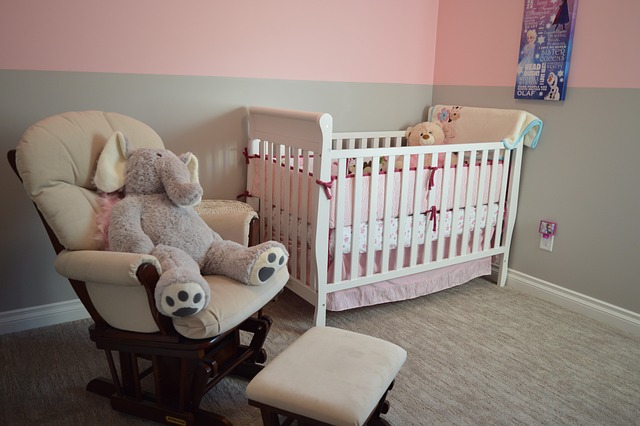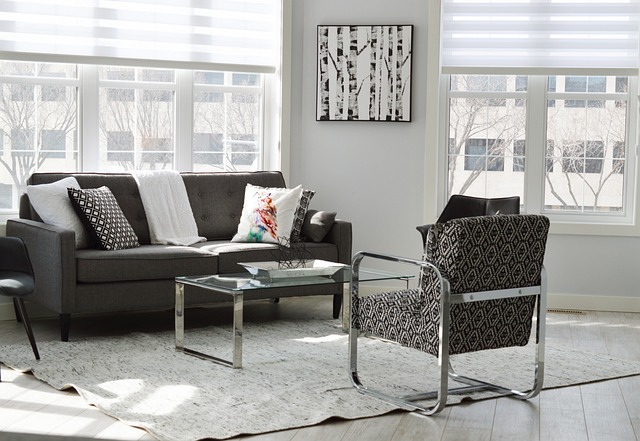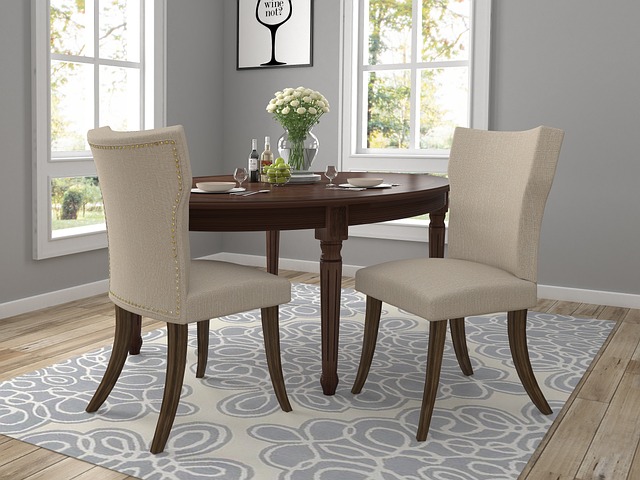Why Chairs Are Expensive
16 min read
Chairs, essential pieces of furniture found in every household, office, or public space, often come with a hefty price tag. Have you ever wondered why chairs can be so expensive? In this article, we will delve into the underlying factors that contribute to the high costs of chairs, exploring various aspects such as design, materials, craftsmanship, and market dynamics. Understanding these intricacies will shed light on why chairs command a significant investment and help you make an informed decision when purchasing one.
- Design and Aesthetics:
One key factor that contributes to the high price of chairs is the design and aesthetics. Chairs are not merely functional items; they also serve as decorative elements that enhance the overall ambiance of a space. Chair designers invest considerable time, effort, and expertise in creating unique, visually appealing designs that cater to different preferences and interior styles. The design process often involves research, sketching, prototyping, and refining, which adds to the overall cost. - Quality Materials:
Another significant aspect affecting chair prices is the quality of materials used in their construction. Chairs can be made from a wide range of materials, including wood, metal, plastic, fabric, or leather. High-quality materials, such as solid hardwoods or premium-grade leathers, are often more expensive to source and work with. These materials offer enhanced durability, comfort, and aesthetics, but their cost is passed on to the consumer. - Craftsmanship and Production:
Craftsmanship plays a crucial role in chair manufacturing, especially for artisanal or designer pieces. Skilled artisans or craftsmen meticulously handcraft chairs, paying attention to every detail, ensuring structural integrity, and achieving flawless finishes. The level of craftsmanship and expertise required can significantly impact the price, as skilled labor often comes at a premium. Additionally, custom-made chairs involve personalized attention and specialized production processes, further driving up the cost. - Production Scale and Volume:
The scale and volume of chair production also affect their pricing. Larger manufacturers that produce chairs in mass quantities can take advantage of economies of scale, reducing production costs per unit. This allows them to offer more affordable options to consumers. On the other hand, limited edition or exclusive chairs produced in smaller quantities may carry higher price tags due to the niche market they cater to and the higher production costs associated with limited runs. - Research and Development:
Innovation in chair design and technology requires substantial investment in research and development (R&D). Furniture companies that invest in R&D activities, such as ergonomic studies, material testing, and prototyping, incur significant costs that are factored into the final chair price. Cutting-edge features, such as adjustable mechanisms, ergonomic support, or smart functionalities, further add to the chair’s overall expense. - Brand Value and Marketing:
The perceived value and reputation of a chair brand can significantly impact its pricing. Well-established brands with a strong reputation for quality, craftsmanship, and design often command higher prices due to their brand equity. Extensive marketing efforts, including advertising, promotions, and collaborations, further contribute to the chair’s price, as these costs are integrated into the overall marketing budget.
What Factors Contribute to the High Cost of Chairs?
Chairs have become essential pieces of furniture in our everyday lives, serving multiple purposes ranging from providing comfort during long hours of work to enhancing the aesthetic appeal of our living spaces. While chairs come in a wide range of prices, it is not uncommon to find some that carry a hefty price tag. The high cost of chairs can be attributed to various factors, encompassing both material and design considerations. In this article, we will delve into the technical aspects that contribute to the elevated price of chairs, shedding light on the key factors influencing their cost.
- Quality Materials:
One of the primary contributors to the high cost of chairs is the use of high-quality materials. Fine chairs are often crafted from premium materials such as solid hardwoods like oak, walnut, or mahogany, which offer superior durability, strength, and an exquisite finish. These materials are carefully selected to ensure longevity and to withstand everyday use, making them more expensive compared to cheaper alternatives like plywood or plastic. - Upholstery and Fabrics:
Chairs that feature upholstery or fabric coverings tend to be more expensive due to the cost of premium textiles and the labor-intensive nature of the upholstery process. Luxurious chairs often employ fine fabrics such as silk, velvet, or leather, which not only provide a touch of opulence but also require skilled craftsmanship to upholster. The intricate detailing, precision cutting, and tailored stitching contribute to the overall cost of the chair, making it an investment in both comfort and aesthetics. - Ergonomic Design:
Chairs designed with ergonomic principles in mind offer superior comfort and support, but this attention to ergonomics often increases their cost. Extensive research and development go into creating chair designs that promote proper posture, reduce strain on the body, and enhance overall well-being. Features like adjustable lumbar support, reclining mechanisms, and height-adjustable seats require specialized engineering, innovative mechanisms, and additional manufacturing costs, all of which add to the final price of the chair. - Customization and Artisanal Craftsmanship:
Customization options and artisanal craftsmanship can significantly impact the cost of chairs. Handcrafted chairs, meticulously carved and shaped by skilled artisans, embody exceptional artistry and attention to detail. These chairs often boast unique designs, intricate patterns, and personalized touches that elevate them to the realm of luxury furniture. Customization options, such as selecting specific finishes, fabrics, or embellishments, add exclusivity and individuality to the chair but also increase its price due to the additional effort and materials involved. - Brand Reputation:
Established brands with a reputation for quality and craftsmanship often command higher prices for their chairs. These brands invest in research, design innovation, and brand equity, which translates into a premium price point. Consumers are willing to pay more for chairs from trusted brands, as they associate them with superior quality, reliability, and longevity. The intangible value attached to a reputable brand can contribute significantly to the perceived worth and subsequent cost of a chair.

Are Premium Materials Driving Up Chair Prices?
When it comes to furniture, chairs have always been a staple in our daily lives. However, you may have noticed that chair prices seem to be on the rise lately. One significant factor contributing to this increase in prices is the use of premium materials. Manufacturers are increasingly opting for high-quality materials to enhance the durability, comfort, and overall aesthetics of chairs. In this article, we will delve into the reasons behind the rising prices of chairs, exploring the impact of premium materials on the market. Premium materials refer to those that are of superior quality, often sourced from exclusive suppliers or harvested through meticulous processes.
These materials are sought after for their exceptional characteristics, such as increased strength, luxurious texture, resistance to wear and tear, and enhanced longevity. Incorporating premium materials into chair construction can significantly elevate the overall quality and appeal of the product, but it comes at a cost. One prime example of premium materials driving up chair prices is the use of top-grade hardwoods. Chairs crafted from high-quality woods, such as walnut, oak, or mahogany, not only exhibit exquisite craftsmanship but also offer unparalleled durability. These woods are known for their inherent strength and resistance to warping or cracking, making them ideal for furniture production. However, the limited availability and extensive processing required for these premium hardwoods contribute to their higher cost, ultimately affecting the final price of the chairs. Another premium material that impacts chair prices is luxurious upholstery fabrics. Manufacturers are increasingly utilizing premium textiles like premium-grade leather, velvet, or high-thread-count fabrics to provide a plush and opulent seating experience.
These materials offer superior softness, durability, and visual appeal, elevating the comfort and aesthetic value of chairs. However, the intricate manufacturing techniques, intricate designs, and the use of high-quality natural or synthetic fibers drive up the cost of these materials, consequently increasing the chair prices. In addition to the primary materials used in chair construction, premium finishes and coatings also play a role in driving up prices. Chair manufacturers may employ advanced techniques such as hand-polishing, artisanal finishes, or eco-friendly coatings to enhance the overall appearance and protect the chair from daily wear and tear. These premium finishes require skilled labor, specialized equipment, and high-quality products, all of which contribute to the final cost of the chair. Furthermore, it is worth noting that the demand for chairs made from premium materials has increased over time. Consumers are increasingly seeking long-lasting, stylish, and comfortable furniture pieces that complement their interior design choices. As a result, manufacturers are compelled to invest in premium materials to meet the evolving preferences and expectations of the market. This surge in demand for high-quality chairs further justifies the higher prices associated with premium materials. While the use of premium materials undoubtedly drives up chair prices, it is essential to recognize the value they bring. Chairs constructed with superior materials not only offer enhanced longevity but also provide an elevated level of comfort, functionality, and aesthetic appeal. The investment in these premium materials reflects a commitment to craftsmanship, durability, and customer satisfaction. In conclusion, the utilization of premium materials significantly impacts the prices of chairs. From top-grade hardwoods to luxurious upholstery fabrics and exquisite finishes, manufacturers are incorporating these materials to meet the growing demand for high-quality furniture. While the cost of production increases with the use of premium materials, consumers can expect chairs that are more durable, visually appealing, and comfortable. As the market continues to evolve, the demand for chairs made from premium materials is likely to persist, further influencing the prices in the industry.

How Does Design Impact the Price of Chairs?
The world of chair design is a fascinating realm where aesthetics and functionality converge to create objects that not only serve as seating solutions but also as expressions of art and style. When considering the factors that contribute to the price of chairs, design plays a pivotal role in determining their perceived value and market demand. In this article, we will explore the intricate relationship between design and pricing, shedding light on the various aspects that influence the cost of chairs. First and foremost, the design itself greatly impacts the price of chairs. A well-designed chair embodies elegance, innovation, and craftsmanship, all of which require meticulous attention to detail and expertise. Designers invest countless hours in conceptualizing and refining chair designs, considering factors such as ergonomics, materials, and aesthetics. The complexity and originality of the design influence the cost, as more intricate designs often require higher production expenses and skilled labor.
Materials are another crucial aspect influenced by design that affects the price of chairs. Designers carefully select materials based on their functional properties, visual appeal, and durability. High-quality materials, such as fine hardwoods, luxurious upholstery fabrics, or premium metals, not only enhance the aesthetic appeal but also contribute to the longevity of the chair. The rarity, sourcing, and processing of these materials impact production costs, and subsequently, the final price of the chairs. Moreover, the design of a chair can also encompass innovative features and technology, further augmenting its price. Advancements in design often introduce cutting-edge mechanisms, adjustable components, or ergonomic enhancements that improve comfort and functionality. Incorporating these innovative elements requires research and development, prototyping, and testing, which adds to the overall cost of production. However, such design-driven advancements can provide a unique selling point and justify a higher price point for chairs. In addition to the design itself, the reputation and brand identity of the designer or manufacturer significantly influence the price of chairs. Renowned designers with established brands have a loyal customer base and a perceived higher value associated with their creations. Customers are willing to pay a premium for chairs bearing the signature of a famous designer or a prestigious brand, attributing additional worth to the design and craftsmanship.
Furthermore, the market demand for specific designs also impacts chair prices. Some designs achieve iconic status and become highly sought after by collectors or enthusiasts, resulting in limited availability and increased demand. The scarcity and exclusivity associated with these designs drive up their prices as collectors are willing to invest significant sums to acquire them. Conversely, chairs with designs that are less desirable or outdated may experience lower demand and subsequently lower prices. It is important to note that while design plays a pivotal role in chair pricing, it is not the sole determining factor. Other elements such as manufacturing processes, production scale, marketing costs, and retailer markups also contribute to the final price. However, design remains a critical aspect that can greatly influence the perceived value and market positioning of chairs. In conclusion, the impact of design on the price of chairs is multifaceted. From the intricacy of the design itself to the selection of materials, incorporation of innovative features, brand reputation, and market demand, each element intertwines to shape the price of chairs. A well-designed chair not only serves its functional purpose but also stands as a testament to the creativity and craftsmanship of its designer. The investment in design elevates chairs from mere objects of utility to pieces of art that enrich our living spaces and enhance our everyday experiences.

Is Craftsmanship a Key Factor in Expensive Chairs?
Craftsmanship is undeniably a key factor when it comes to expensive chairs. These meticulously crafted pieces of furniture showcase the artistry and skill of talented artisans, and their expertise can elevate a chair from being merely functional to a true masterpiece. In this article, we will explore the significance of craftsmanship in the context of expensive chairs, shedding light on the intricate details and techniques that contribute to their allure. When examining expensive chairs, one cannot help but be captivated by the impeccable craftsmanship on display. Skilled craftsmen employ a combination of traditional and modern techniques to bring these chairs to life. Each chair is painstakingly crafted by hand, with meticulous attention to detail. From the selection of the finest materials to the precision of the joinery, every aspect is carefully considered and executed to perfection. One of the distinguishing features of craftsmanship in expensive chairs is the quality of the materials used.
Artisans select the finest woods, such as walnut, mahogany, or cherry, known for their durability, beauty, and unique grain patterns. The wood is expertly shaped and carved, revealing the artisan’s mastery of their craft. The use of premium upholstery fabrics and leathers further enhances the chair’s elegance and comfort, showcasing the artisan’s discerning eye for quality. Intricate joinery techniques are another hallmark of craftsmanship in expensive chairs. Traditional methods, such as mortise and tenon joints, dovetails, and finger joints, are employed to ensure the structural integrity of the chair. These techniques not only provide strength but also lend an aesthetic appeal, with their visible craftsmanship becoming a design feature in itself. The precision and skill required to execute these joints require years of experience and a deep understanding of the materials being used. The art of hand carving also plays a significant role in the creation of expensive chairs. Skilled artisans meticulously carve intricate motifs and patterns into the chair’s frame, adding a touch of artistry and individuality. These decorative elements showcase the artisan’s creativity and ability to transform a simple chair into a work of art. From delicate floral motifs to intricate geometrical patterns, each carving is a testament to the artisan’s dedication and craftsmanship. Furthermore, the finishing process in crafting expensive chairs is of utmost importance. Finishing techniques such as staining, polishing, and lacquering enhance the natural beauty of the wood, giving it a deep, lustrous sheen.
This meticulous attention to detail ensures that every surface and contour of the chair is flawlessly finished, creating a visually stunning and tactilely satisfying piece of furniture. In conclusion, craftsmanship is undeniably a key factor in the creation of expensive chairs. The expertise, skill, and artistry of craftsmen elevate these chairs to a level of refinement and beauty that sets them apart. From the careful selection of materials to the precision of joinery, hand carving, and finishing techniques, every aspect of craftsmanship contributes to the allure of these exquisite pieces of furniture. When one invests in an expensive chair, they are not just purchasing a functional piece of furniture; they are acquiring a testament to the mastery of craftsmanship and a timeless work of art.

Are Brand Reputation and Exclusivity Influencing Chair Prices?
When considering the factors that contribute to the high prices of chairs, one cannot overlook the significant influence of brand reputation and exclusivity. The realm of chair manufacturing has evolved beyond merely functional seating arrangements to becoming a symbol of status, luxury, and craftsmanship. In this context, renowned brands with a strong reputation and an aura of exclusivity hold immense sway over the pricing of chairs. Brand reputation plays a pivotal role in the perception and valuation of chairs. Established brands have spent years, if not decades, building a reputation for superior quality, design innovation, and attention to detail. Consumers, seeking assurance of the chair’s durability, comfort, and overall craftsmanship, are often willing to pay a premium for products associated with reputable brands. The concept of exclusivity further accentuates the allure and price positioning of chairs.
Luxury brands, limited edition releases, and designer collaborations create a sense of exclusivity, catering to a niche market of discerning individuals who prioritize uniqueness and rarity. The limited availability of such chairs elevates their desirability and, subsequently, their price. Exclusivity is often achieved through limited production runs, the use of high-end materials, or intricate customization options, all of which contribute to the perceived value of the chair. Moreover, brand reputation and exclusivity foster a sense of trust and confidence in consumers. When investing in an expensive chair, buyers often rely on the brand’s track record, customer reviews, and heritage. Established brands that consistently deliver exceptional products maintain the trust of their customers, providing reassurance that the high price tag is justified. This psychological aspect of brand reputation influences consumers to associate quality and prestige with the chair, resulting in increased willingness to pay a premium. From a marketing perspective, brand reputation and exclusivity create a positioning strategy that targets specific market segments. By cultivating a strong brand image and fostering a sense of exclusivity, manufacturers can tap into the aspirations and desires of affluent consumers who seek to differentiate themselves through their possessions. This targeted approach allows brands to command higher prices, as buyers perceive their chairs as a statement of personal style and social status. It is important to note that the influence of brand reputation and exclusivity on chair prices extends beyond the manufacturing costs.
While the quality of materials, craftsmanship, and design intricacies contribute to the production expenses, the intangible factors associated with brand reputation and exclusivity significantly impact the perceived value and, consequently, the price tag of a chair. In conclusion, brand reputation and exclusivity play a substantial role in determining the prices of chairs. Established brands with a strong reputation are able to command higher prices based on their track record of delivering superior quality and design. Additionally, the exclusivity factor, achieved through limited availability and high-end features, enhances the desirability and perceived value of chairs. By leveraging these intangible aspects, manufacturers can position their products as luxury items, appealing to affluent consumers who prioritize status and uniqueness. Ultimately, the interplay between brand reputation, exclusivity, and pricing highlights the intricate dynamics of the chair market.

Can Limited Supply and High Demand Justify Expensive Chairs?
In the world of furniture, chairs hold a significant place in both residential and commercial settings. However, some chairs come with hefty price tags, leaving consumers wondering why they are so expensive. While factors like design, materials, and craftsmanship contribute to the cost, the interplay between limited supply and high demand also plays a crucial role in justifying the price of chairs. This article explores the intricate relationship between limited supply, high demand, and the resulting expensive chairs, shedding light on the economic dynamics at play.
- Rarity and Exclusivity:
Limited supply, often driven by the scarcity of specific materials or skilled artisans, can create a sense of rarity and exclusivity around certain chairs. Manufacturers may intentionally produce a limited quantity to enhance the perceived value of their products. This scarcity drives up demand among collectors, enthusiasts, and those seeking unique and highly sought-after pieces. As a result, the chairs become desirable commodities, justifying their higher price point. - Quality and Craftsmanship:
High-end chairs often boast superior quality and exceptional craftsmanship. Skilled artisans invest significant time, expertise, and attention to detail in creating these chairs, resulting in meticulously crafted pieces that exude elegance and durability. The limited number of artisans capable of producing such chairs contributes to the scarcity factor, driving up their price. Consumers willing to pay a premium understand and appreciate the fine artistry involved, making the expensive chairs worth the investment. - Design and Innovation:
Chairs that push the boundaries of design and incorporate innovative features often come with a higher price tag. Designers who strive to revolutionize the concept of seating prioritize creativity, ergonomic considerations, and avant-garde aesthetics. These groundbreaking designs generate substantial interest among design enthusiasts, collectors, and those who value functional art. The limited availability of such pioneering chairs, combined with their unique features, elevates their desirability, and subsequently, their cost. - Brand Reputation and Prestige:
Established furniture brands with a rich heritage and reputation for excellence can command higher prices for their chairs. These brands have built a loyal customer base over the years, with customers associating their name with superior quality and timeless style. The limited supply of chairs from reputable brands further enhances their allure, as consumers perceive them as a symbol of status and prestige. Owning a chair from an esteemed brand becomes a statement of taste and discernment, justifying the premium price. - Market Forces and Competitive Pricing:
The principles of supply and demand play a vital role in determining the price of chairs. When demand for a particular chair exceeds its available supply, manufacturers can raise prices to capitalize on the market dynamics. Factors such as trends, consumer preferences, and the influence of social media can contribute to increased demand for specific chair designs. As a result, manufacturers adjust their pricing strategies to reflect the perceived value and market demand, leading to expensive chairs.






